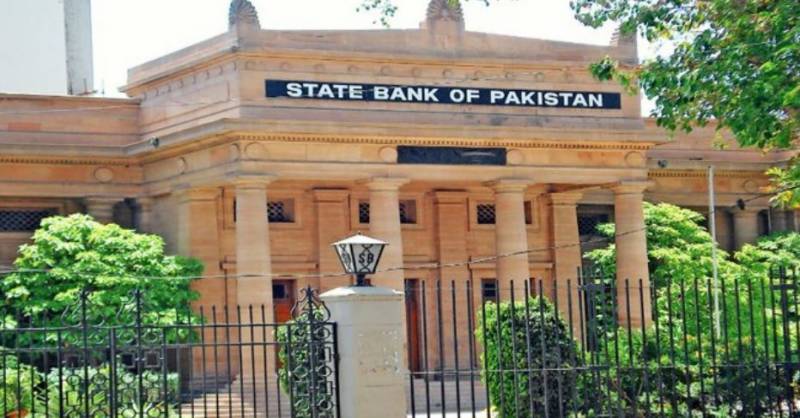By Staff Reporter
KARACHI: The State Bank of Pakistan (SBP) on Monday kept its benchmark interest rate on hold at 15 percent, opting to leave borrowing costs unchanged despite soaring inflation as it warned of a further economic slowdown dure to catastrophic floods.
The decision “strikes an appropriate balance between managing inflation and maintaining growth in the wake of the floods,” the central bank said in a policy statement.
The SBP kept its policy rate unchanged for a second consecutive meeting.
The central bank said the recent floods have altered the macroeconomic outlook of the country and a fuller assessment of their impact is underway.
“Based on currently available information, GDP growth could fall to around 2 percent in FY23, compared to the previous forecast of 3-4 percent before the floods,” it added.
“…higher food prices could raise average headline inflation in FY23 somewhat above the pre-flood projection of 18-20 percent.”
“The impact on the current account deficit is likely to be muted, with pressures from higher food and cotton imports and lower textile exports largely offset by slower domestic demand and lower global commodity prices.”
As a result, any deterioration in the current account deficit is expected to be contained, still leaving it in the vicinity of the previously forecast 3 percent of GDP.
Real sector
Most demand indicators were lower in both July and August than in the same period last year—including sales of cement, POL, and automobiles. On the supply side, electricity generation declined for the third consecutive month in August, falling by 12.6 percent (y/y). In July, LSM declined by 1.4 percent (y/y), its first contraction in two years, largely driven by broad-based deterioration in domestically-oriented sectors. Looking ahead, the recent floods are likely to adversely affect the output of cotton and rice as well as the livestock sector this year.
External sector
The current account deficit shrank for the second consecutive month in August to only $0.7 billion, almost half the level in July. In September, PBS data shows that the trade deficit contracted sharply by 19.7 percent (m/m) and 30.6 percent (y/y) to reach $2.9 billion, reflecting a decline in both energy and non-energy imports amid stable exports.
During the first quarter of FY23, imports have declined by 12.7 percent (y/y) to $16.3 billion while exports have grown by 1.8 percent (y/y) to $7 billion. Looking ahead, the floods are likely to result in greater need for some agricultural imports such as cotton and a few perishable food items.
At the same time, exports of rice and textiles are likely to be negatively affected. However, these adverse impacts could to a large extent be offset by downward pressures on the import bill from lower domestic growth and falling global commodity prices and shipping costs. In addition, as experienced after previous natural disasters in Pakistan, the impact on the current account could be further cushioned by international assistance in the form of current transfers.
Fiscal sector
In July, fiscal outcomes were better than in the same period last year. The fiscal deficit fell to 0.3 percent of GDP while the primary balance recorded a surplus of 0.2 percent of GDP. This improvement was largely due to higher FBR tax revenues as well as a decline in government spending.
During the first quarter, FBR tax collection rose to Rs 1.635 trillion, surpassing the target by Rs 27 billion. While the floods could make it challenging to achieve the planned fiscal consolidation this year, the government has so far been able to meet urgent spending needs through re-allocation and re-appropriations of budgeted funds. Looking ahead, additional foreign inflows, including in the form of grants, should help fund any fiscal slippages.
Beyond the current year, reconstruction and rehabilitation will necessitate additional spending over the medium-term, with assistance from the international community.
Monetary and inflation outlook
In line with slowing economic activity, private sector credit has seen a net retirement of Rs 0.7 billion so far this fiscal year, compared to an expansion of Rs 62.6 billion during the same period last year. This decline in credit mainly reflects a retirement of working capital loans and a sharp fall in consumer finance.
After peaking in August, headline inflation fell by more than 4 percentage points in September to 23.2 percent (y/y), driven by a reduction in electricity prices due to an administrative intervention. At the same time, the momentum of inflation also slowed by more than expected, declining by 1.2 percent (m/m). On the other hand, both core and food inflation picked up further.
Looking ahead, the supply-shock to food prices from the floods is expected to put additional pressure on headline inflation in the coming months. Nevertheless, headline inflation is still projected to gradually decline through the rest of the fiscal year, particularly in the second half.
Thereafter, it should fall towards the upper range of the 5-7 percent medium-term target by the end of FY24. A continuation of prudent monetary policy and orderly movements in the Rupee should help contain core inflation going forward.
At the same time, curbing food inflation through administrative measures to resolve supply-chain bottlenecks and any necessary imports should be a high priority. The MPC will continue to carefully monitor developments affecting medium-term prospects for inflation, financial stability, and growth.
Copyright © 2021 Independent Pakistan | All rights reserved




